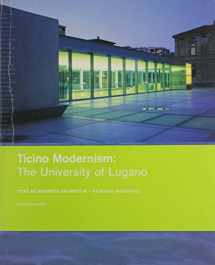
Ticino Modernism: The University of Lugano
Book details
Summary
Description
The new campus for the University of Italian Switzerland (USI) in Lugano is an excellent example of how to obtain overall harmony while indulging multiple authors. An acknowledged master of Ticino Modernism, Aurelio Galfetti, and his associate for this project, Jachen Konz, designed the master plan and one of the campus' five buildings, while the other four were designed by teams of architects under 40, chosen through a competition. The process was short - architects were established in 1998 and the campus was completed in 2002. Each building possesses its own character and style, while the assemblage adheres to the taste of the master planner, who influenced each project as the general coordinator of works.
USI's master plan was liberally based on a 1997 study by architect Peter Zumthor and his students at the Academia that proposed five buildings differentiated by function, in contrast to the conventional practice of assigning buildings by academic departments. The only exception is the theological school, which occupies its own structure as an independent entity. The guiding strategy was to create unity through landscaping and sense of accessibility through architectural transparency.


We would LOVE it if you could help us and other readers by reviewing the book
Book review



